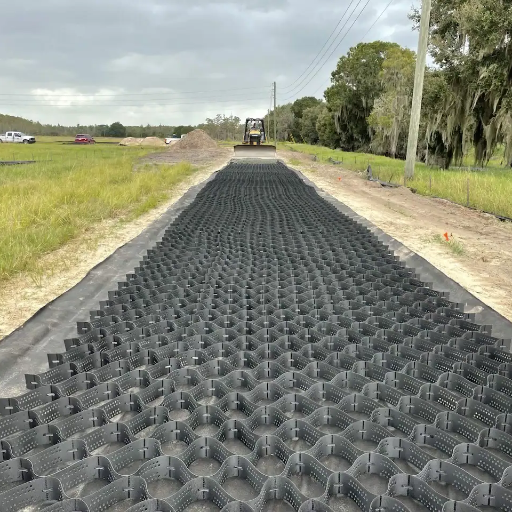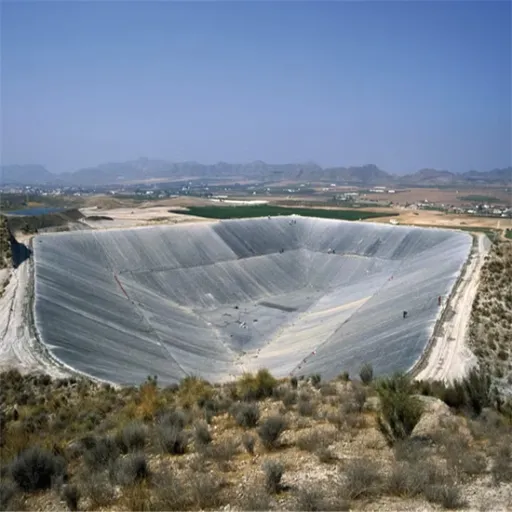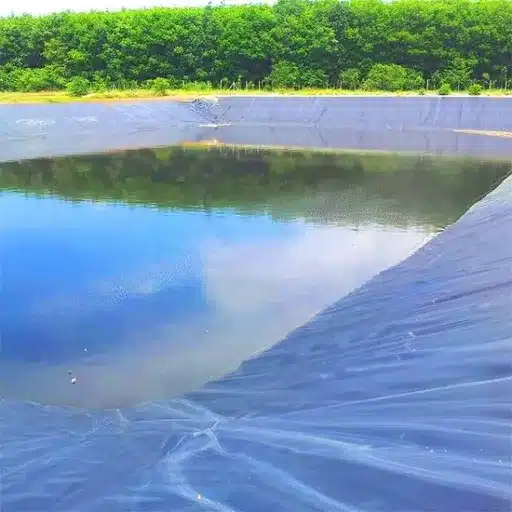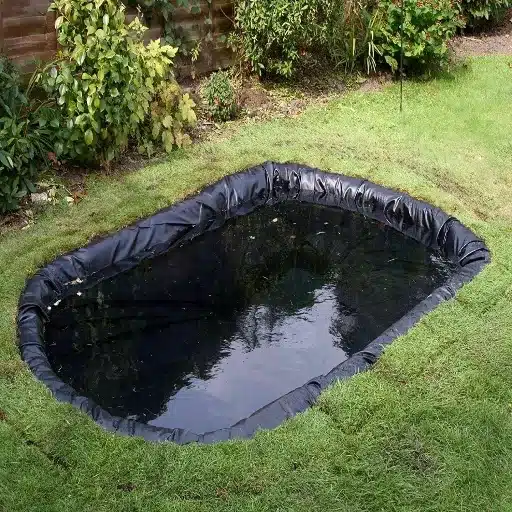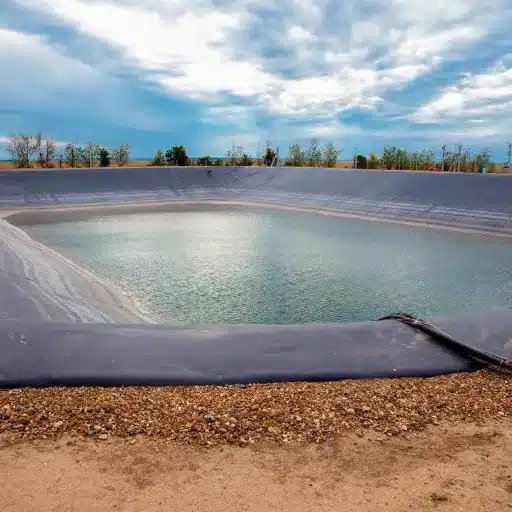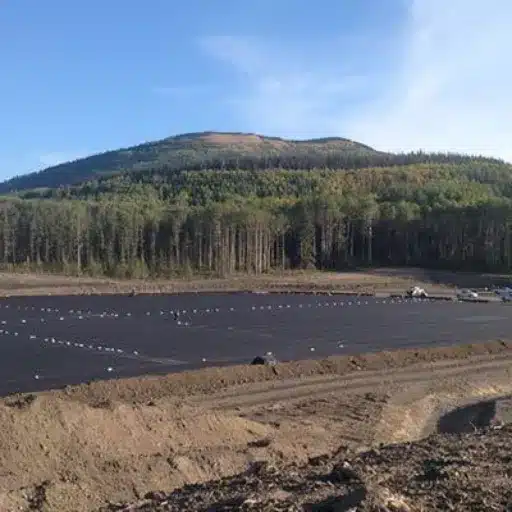Rather than the construction of roads being weather-beaten and unreliable, soil management and erosion prevention stand out as prime engineering challenges. This is where geocells come in as an innovative technology to fortify soil and improve load distribution, thus transforming modern road construction. This blog explores how it is a game-changer for soil stabilization and gravel, helping strength, reducing maintenance, and ensuring greater life expectancy. Whether in construction or engineering or even if your thirst for knowledge lies in extraordinary infrastructure solutions, this article will open up the whole world of geocells as potential instruments in the remodeling of road-building practices. Stay with us to find out why they’re becoming a tool of necessity in projects today.
Introduction to the Use of Geocells in Road Construction
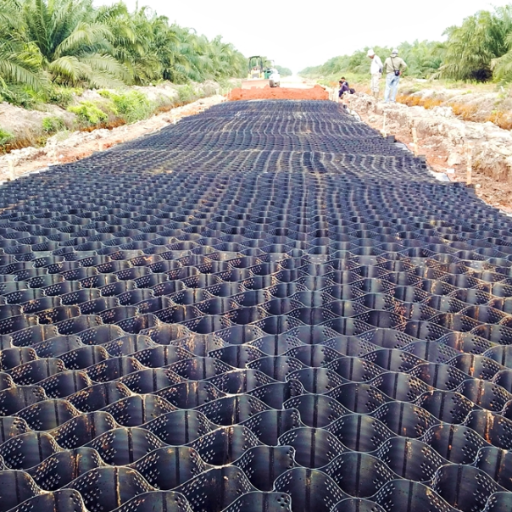
Geocells are three-dimensional, honeycomb structures manufactured using high-density polyethylene or similar materials. They stabilize soil, evenly distribute loads, and strengthen subbases for roads. When filled with soil, gravel, or other materials, the cells lock together and form a composite layer that resists the movement of underlying soil and prevents erosion. Thus, geocells provide the highest quality and dependable solution for road and highway construction.
The Importance of Geocells in Today’s Infrastructure
Nowadays geocells have emerged as the essence of infrastructure enhancement of strength, durability, and sustainable construction. They are applied in retaining walls, slope stabilization, and erosion control for railroads, airports, and ports, rather than simple road construction. With the foundation created by geocells being strong enough to prevent any sudden structural failures, it becomes especially useful in weak or loose soils.
The other primary advantage of geocells is that they save costs. The new industry report says that geocells can cut by 50% or more the need for construction material, with a lowering of project costs and its associated carbon footprint. They are even more practical under high stress load conditions, where geocells may improve load distribution by up to 30% versus traditional construction methods. This, in turn, increases durability, thus allowing infrastructures to last longer.
Geocells have been recorded to reduce erosion rates by anywhere from 50% to 70% on projects that deal with heavy rainfall or flooding. Lastly, since they can be filled with almost anything ranging from sand and gravel to recycled construction wastes, geocells constitute a very environmentally friendly approach, answering increasing demands of sustainable construction.
By integrating geocells in every aspect of modern infrastructure, engineers and planners will manage problems of soil instability, environmental conservation, and financial stress, thus, ensuring the resiliency and longevity of urban and rural development.
Overview of Soil and Gravel Stabilization
Soil and gravel stabilization is an important consideration in modern construction and infrastructure projects to guarantee long-term durability and structural soundness. Stabilization methods necessarily arguably serve to improve the load-bearing capacity of soils and aggregated surface upon which roads, railways, retaining walls, and industrial floors are constructed. Some common methods might involve the use of geosynthetics, such as geocells, to reinforce some weak soils and prevent their displacement under heavy loads.
Latest data accentuate how these geocells increase soil stability; they have been shown in one of its studies, for example, that geocell-reinforced soil can bear loads up to 50% more than traditional reinforcement methods, thereby greatly minimizing the hazards of soil subsidence or erosion. Likewise, for gravel stabilization, geocells also effectively restrain the lateral movements of the aggregates, hence ensuring the maintenance of a uniform flat surface throughout the lifetime. The International Journal of Geosynthetics and Ground Engineering has stated that geocells cut down the thickness of the aggregate layers up to 40%, thus reducing the cost of materials and in turn, the construction time.
And apart from the immense ecological benefits pursued by employing geocells, applying methods of sustainable construction will only further increase those benefits. The use of recycled material, such as crushed concrete or asphalt, in conjunction with geocells, ought to reduce the amount of waste, hence promote the process of circular construction. This is good for reducing the carbon footprint of the construction projects themselves but without compromising their ability to perform.
Hence, we can see that through soil and gravel stabilization technologies innovations along with the latest research and material advancements play an important role in securing resilient and sustainable infrastructure worldwide.
Introduction to Innovations in Road Structure Reinforcement
New technologies of road structure reinforcement are presently changing an entire network of sustainable and resilient transport systems. With the introduction of advanced materials and methods, engineers are striving to come to grips with issues related to heavy traffic loads, adverse weather conditions, and the degradation of the environment. These innovations comprise geosynthetic reinforcements, polymer-based stabilization products, and smart monitoring systems.
Geosynthetic Reinforcements
Geosynthetics such as geogrids and geomembranes reinforce the strength and life of road foundations. This reduces load concentration and subsidence or deformation due to heavy traffic. According to recent data, use of geogrid in asphalt layers increases its load-carrying capacity by up to 50%’, promising enhanced maintenance-free service life of roads and reduced maintenance costs.
Polymer-Based Stabilization
Polymer Stabilizers, such as liquid binders, are increasingly being used to stabilize subgrade soils. They increase soil cohesion and drainage so as to have a firm and well-drained foundation. It has been tested that, compared to traditional ones, roads stabilized by polymers have 30% less cracks and rutting as it progresses, hence guaranteeing its long-term performance.
Smart Monitoring Systems
The inclusion of IoT devices and sensors is turning road construction upside down to the maintenance. Smart systems monitor structural health in real-time by collecting data related to stress, moisture levels, temperature fluctuations and traffic loads. For example, embedded sensors alert engineers when excessive strain is being experienced, thus preventing failures through predictive maintenance.
Sustainability Benefits
Enhancement of road structures also assists in achieving sustainability goals. Geosynthetics and polymer stabilization reduce dependence on virgin materials, whereas smart monitoring reduces waste by pinpointing specific areas in need of repair. A study published in the year 2023 provided evidence that these advanced reinforcement strategies have the capacity to reduce greenhouse gas emissions related to road construction and repair by up to 25%.
By means of combining cutting-edge technology with sustainable practices plus robust materials, the road construction industry has set a mark upon which infrastructures shall be more durable, efficient, and environment-friendly.
Understanding What Geocells Are
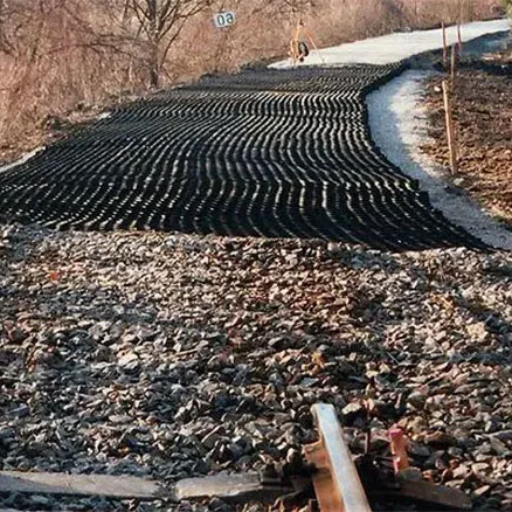
Geocells are three-dimensional, lightweight structures produced from various polymeric materials. Their use entails stabilizing the soil for better load distribution and reinforcing areas such as roads, slopes, and foundations. The system of confinement ensures that soils or aggregates maintain position; hence, they give additional strength and erosion protection through diverse construction- and landscaping-work solutions.
Structure and Material Composition of Geocells
Geocells use high-density polyethylene (HDPE) or variants of polymer materials needing an excellent tensile strength and durability. These containment systems have a honeycombed grid of interconnected cells, which are expandable to form a three-dimensional structure. The materials selected to manufacture geocells give it inherent flexibility, resistance to chemical exposure, and the ability to bear both dynamic and static loads in the metamorphosing environmental conditions.
The load capacity of HDPE geocells usually stands in the region of 300 to 600 kPa, subject to the cell dimension and infill material such as sand, gravel, or soil. Use of geocells evidently brings down the aggregate thickness by even 50 percent without compromising its performance, thus making the construction not only cost-effective but also resource-efficient. Perforations are incorporated in the grids to allow drainage of water, therefore increasing efficiency in difficult terrains and preventing water logging.
Geocells have been developed in several different cell sizes, thicknesses, and depths to complement varying project requirements. Meanwhile, newer production technology has been adopted to reduce the environmental burden during the manufacture of geocells, complementing present-day sustainability targets. This makes geocells a multi-dimensional and efficient approach towards infrastructure development and erosion control.
Soil Stabilization with Geocells
Geocells carry out soil stabilization by means of creating some kind of a three-dimensional cellular confinement system that distributes loads and limits excessive displacement of soil. Such a polymeric network-bound interconnected cell structure transfers vertical stresses laterally and increases the bearing capacity of the soil underneath. Studies have demonstrated that geocell-reinforced soils can improve load distribution by as much as 50% and therefore act as an ideal stiff base supporting roads, railways, and pavements.
The recent advancements have enhanced geocells’ ability to reduce settlement on weak subgrades. For example, road construction using geocells has been shown by some case studies to allow a 60% reduction in base layer thickness without adversely affecting the structural integrity of the road. Geocells enhance erosion control with shear resistance of up to 40kN/m in reinforced slopes even under extreme environmental conditions.
Being an environmentally friendly technique from a sustainability point of view, geocells are now adopted more widely. Since modern designs use recycled and sustainable materials, applications of geocells include steepened slope construction, green roofs, and sustainable retaining walls.
Comparison with Geogrids
Geocells and geogrids differ in structure, function, material composition, installation process, and typical applications.
| Key Point | Geocells | Geogrids |
|---|---|---|
| Structure | 3D Honeycomb | 2D Grid |
| Function | Load Spread | Soil Reinforcement |
| Material | HDPE/Polymer | Polymer/Plastic |
| Installation | Simple/Expandable | Complex/Layered |
| Applications | Slopes/Roads | Walls/Pavements |
Benefits of Using Geocells
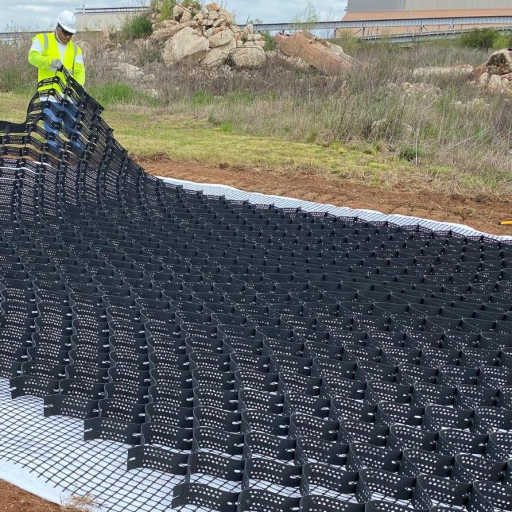
There are many benefits of geocell. They spread loads evenly, helping in the protection of soil from displacement and also stabilization, mainly on slopes and roads. Installation is a simple and expandable process, saving time and energy. This also increases the durability and performance of these applications in harsh environments, making them a significant choice for a number of applications in construction and soil reinforcements.
Durability and Load Distribution
One of the main virtues of geocells is durability and load distribution from the modern perspective of construction and soil reinforcement. Geocells made from high-density polyethylene (HDPE) or similar polymer materials resist degradation caused by UV light, chemical exposure, and temperature extremes, thereby providing a long service life even under adverse environmental conditions.
In distributing loads, geocells will prevent loads from being placed irregularly, and it also allows uniform spreading of an area. Studies have indicated that geocells can reduce vertical stress on the underlying subsoil by up to 50% compared with an unreinforced system. This will work well in places where there is heavy traffic, such as roads, parking lots, or positions for bridge abutments, since they always disperse pressure evenly enough to prevent soil compaction and rutting.
In particular, geocells have also been proven to engage directly in improving the bearing capacity of soil. Studies have shown that the use of geocells in a subgrade layer may improve the bearing capacity ratio of 1.5 to 5 times, depending on the actual soil type and construction conditions, which can help reduce the maintenance cost and make infrastructure last longer. Thus, geocells prove to be an economically viable choice for both civil and environmental engineering projects.
Environmental Impact and Sustainability
Geocells hold a pivotal stage in environmental implications and sustainability. While promoting soil stability and minimizing extensive excavation or use of non-renewable resources help minimize the carbon footprint of construction-related activities, construction and environmental projects using geocells are considered sustainable. Latest studies prove that the use of geocells can considerably diminish the demand for aggregate materials by up to 50% in some instances, which means the conservation of natural resources.
Geocells also help preserve the environment in the long run by preventing soil erosion and stabilizing slopes. For instance, projects involving geocells have managed to reduce soil loss by 70%, depending on terrain conditions and the design of the geocells. This is necessary to mitigate the effects of deforestation, agriculture, and urbanization.
On the other hand, the reuse of materials such as recycled high-density polyethylene (HDPE) for constructing geocells is an additional environmental improvement. Nowadays, geocells are constructed with maximum recycled content of up to 95%, which directly supports major global sustainability targets and circular economy principles. These factors coupled with their ability to reduce maintenance cost for infrastructure score the environmental benefits of geocells, which point at green and sustainable constructions.
Cost-Effectiveness in Road Projects
The use of geocells in road projects results in material cost savings and the least amount of maintenance, establishing them as a reasonably priced option for modern road construction. The recent Industry reports have established that geocells can reduce the use of high-quality fill materials by up to 50% since these systems permit the use of locally available lower-grade materials whilst still providing structural stability to the road. With the geocell reinforcement in place, the load distribution is enhanced, thus lessening further repair expenditures, with deterioration reduction taking place under heavy traffic situations.
The environment cost implications of geocells are well demonstrated in recent case studies. For instance, a report from 2022 observed a highway project in India where construction costs incurred for the building for over 30% discount through geocell based reinforcement than the traditional construction methods. Equally, a study in the United States claimed that about 25% discount of maintenance costs from unpaved road projects over a span of 10 years has been attained by including geocells. This data have to be unleashed showing economic advantages of geocells and proving to be an attractive investment for governments and contractors wishing to get the most out of their budgets without sacrificing durability and performance.
In Road Construction Applications
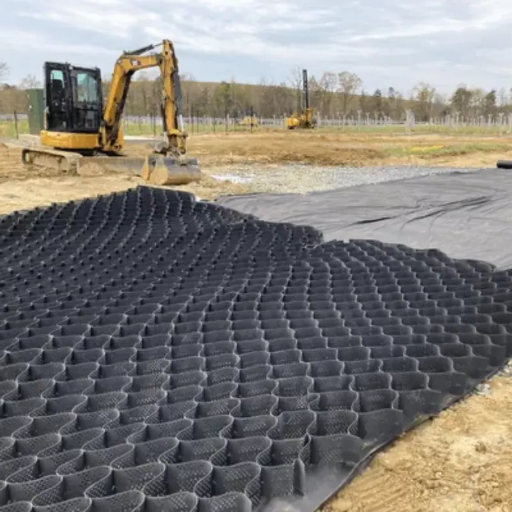
Geocell systems have diversified applications comprising almost every area of road construction for providing stability and saving on material requirements. Soft soil reinforcement, erosion control, and load distribution are some areas where a greater degree of erosion control is achieved. Containing fill material within the geocells, roads gain strength and longevity, thus resulting in fewer maintenance requirements. Because of their broad adaptability, they can be used on unpaved roads, highways, and slope stabilization projects.
Examples of Case Studies on Geocell Application
CASE STUDY 1: Reinforcing Rural Roads of India
Geocells have given successful treatment to rural road projects in India. One popular instance was the reinforcement of a weak subgrade in a rural village area with soils of low bearing capacity. The use of geocell systems greatly enhanced the load distribution and reduced pavement thickness by approximately 30%, thereby giving material cost savings of approximately 25%. The project also reported increased durability of roads, thereby reducing maintenance from the 5th year onward.
CASE STUDY 2: Highway Stabilization in the United States
A geocell system was applied to a road system in Texas to solve erosion problems and adequately carry heavy traffic. It was then able to enhance the load-bearing capacity of the base by an estimated 50%, thus ensuring better performance of the pavement against repeated vehicle loads and prolonged life of the pavement. Studies had further shown the use of geocells reduced the construction time by 20% and saved huge labor costs.
CASE STUDY 3: Erosion Control in Flood-Prone Areas in China
A geocell system was applied for slope stabilization and erosion control in the flood-prone areas of China. System application limited soil displacement during torrential rains, thus preserving the structural integrity of adjacent infrastructures. According to data obtained in a post-implementation survey, soil erosion was reduced by 40% as compared to conventional techniques. Additionally, vegetation proliferation inside the geocell structure promoted environmental restoration over time.
These cases show how geocells, together with sound engineering, may offer a cheap, durable, and sustainable alternative in all applications around the world.
Geocells in Temporary Roads and Unpaved Areas
Geocells have proved quite effective in stabilizing temporary roads and unpaved areas. Being cellular confinement systems, they allow more even dispersion of load), thus minimizing surface deformations and rutting-an ordinary phenomenon in unpaved road scenarios. According to recent research and field data, the application of geocells can increase the load capacity of any given road by as much as 50%. This makes them extremely useful in areas where heavy vehicle traffic or weak subgrades are common.
At the same time, the use of geocells drastically cuts down on the base fill material requirement, thus providing much economic benefit. Instances of unpaved road projects clearly located material savings between 30 and 50% during implementation. The lag effect cannot go unnoticed: geocell-reinforced roads have proven to last longer, despite a 40% increase in maintenance cycles, turning the initial investment into worth-over-time-let.
Another significant advantage of environmental benefits has made the geocell solution very attractive. Recent studies have shown that a geocell can reduce as much as possible the need for mining and transportation of raw materials for construction, consequently reducing the total carbon footprint of the projects. The ability to create stable areas using such geocells pushed their popularity for use in various rural roads, temporary access routes, and environmentally sensitive areas. Architects and engineers dated much of these successes to the exposure given to geocells.
Performance in Soft Subgrades
Geocells provide good performance to soft subgrades found so often in engineering projects. By confining the soils in the cellular system, geocells distribute the applied loads fairly evenly and reduce soil deformation resulting from the applied load. Various recent researches have shown that geocells can increase bearing capacity by 50% compared to unreinforced soil.
For example, research evidence revealed that stress within geocell-reinforced subgrades was reduced by as much as 30% in vertical stress, resulting in a longer infrastructural life and fewer maintenance costs. Such geocell applications are excellent in reducing settlement in soft soils, which, in turn, improve structural uniformity.
Another important benefit is the reduced requirement of fill material. It is reported that geocells would stabilize grounds using 40% less aggregate material, which in turn reduces the cost of construction and environmental impact. This efficiency makes geocells well suited for projects in environments where resources for construction are limited or where environmental conscience has become a prime consideration.
Future Trends and Innovations
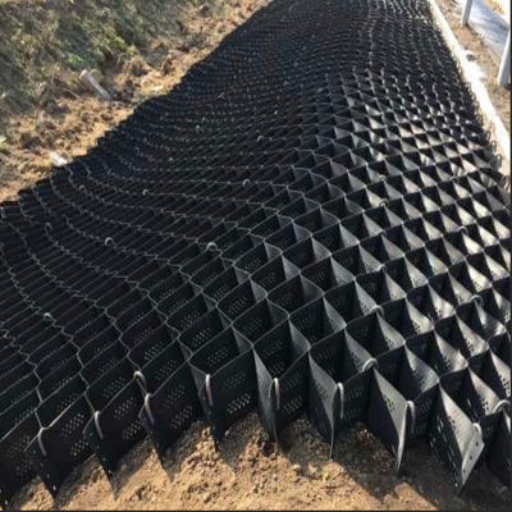
Prospects for further advancements in geocell technology are likely to emphasize increasing material strength, lowering the impact on the environment, and further expanding applications. There is a growing requirement for sustainable geocells manufactured from recycled or bio-based materials. Improvements in manufacturing could result in stronger and cheaper geocells, eventually making them viable for larger infrastructure projects under a wider variety of environmental conditions. The emphasis here is that these trends are targeted at overcoming present-day limits and awaking the increasing demand for ground stabilization systems that are efficient and environmentally friendly.
Emerging Technologies in Geocell Applications
Emerging technologies are being truly applied to better geocell applications with a focus on developing novel solutions for ground stabilization and reinforcement. One of the key developments has been the use of advanced polymeric materials such as nano-reinforced plastics, which impart much higher tensile strength and durability to geocells without burdening them with too much weight. These materials are increasingly being used in large-scale civil engineering projects that require maximum resistance against environmental stresses and deformation.
Another skillful revolution lies in the domain of using 3D printing technology for manufacturing geocells. With 3D printing, there is a high degree of precision in the customization of cell geometry and cell size to fit very specific project needs. Reduction in wastefulness during production and increased efficiency generally are created in aid of the matters of an economical solution. According to recent research, 3D printing technology may result in its production cost-cutting by 20% while simultaneously improving design flexibility.
In addition, the trend is quickly moving toward embedding sensors and IoT technologies into geocell systems. Smart geocells monitor real-time stress, pressure, and environmental parameters and engage in predictive maintenance and performance tracking. The smart geocells have found promising use cases in road construction by providing crucial data for engineers to optimize load distribution and mitigate long-term maintenance costs.
Moreover, machine learning and simulation tools are revolutionizing the design of geocell applications. Using algorithms, engineers can simulate and predict the behavior of geocells under different conditions and optimize the design parameters for maximum efficiency. This scenario not only speeds up the design process but also reduces the risk of failure in adverse environments.
Emerging technologies mitigate real constraints of conventional applications of geocells and offer innovative, green, and cost-efficient solutions. With further development, geocells will thus become priority applications in contemporary infrastructure and environmental sustainability.
Potential Advancements in Soil Stabilization
Soil stabilization industry trends are focused more on making solutions more efficient and sustainable. Polymer-enhanced geocells, for instance, are being developed to offer higher tensile strengths and greater durability under extreme climatic conditions. Recent research shows that these novel geocells are giving 25-30% better load-bearing capacities than conventional counterparts, allowing them to be used in applications of high stress, such as highways and airfields.
In addition to that, hill chart crossing shows that bioengineered soil binders are revolutionizing the very face of stabilization. Being made from organic materials, these binders minimize environmental impact by reducing CO2 emissions during production when compared with standard cement-based solutions. Reports have shown that bio-based alternatives may cut carbon emissions by around 40% while also providing almost equal capability in controlling erosion and supporting a structure.
Nanotechnology is the third sphere for shaping soil stabilization methods. Soil treatment with nano-silica particles has greatly enhanced soil cohesion and resistance to water infiltration. The procedure proves at least 50% impermeability of soil, mainly in areas prone to seepage.
Such developments testify that continuing attempts are made toward providing ever more sustainable, durable, and inexpensive means to geotechnical application, so as to leave modern concrete infrastructure resilient across generations.
Integrating Geocells and Modern Road Construction
Geocells of honeycomb-like confinement structure made out of HDPE form the backbone of modern road construction, basically for soil reinforcement and stabilization. These novel structures improve load distribution, impede erosion of soil, and prolong road life, especially in areas where the soil is not very promising.
Recent studies indicate that geocells reduce pavement thickness by about fifty percent without compromising pavement structural integrity when used in road base layers. Reduction does not just cut cost but also lessens environmental degradation since fewer raw materials are needed. Moreover, geocells further prove their capacities by enhancing 50-75% bearing capability of soils, and hence roads can take heavy traffic volumes.
A famous proof of solving the age-old geology problem with geocells can be seen in temporary and permanent roadways, set in remote or environmentally sensitive places. Such roads in sandy soil areas obtained a 30% surface stability increase when geocells were implemented. Apart form extending durability, geocell solutions also ensure rapid drainage preventing water accumulation that causes road deterioration.
The conjunction of geocells with modern construction technologies such as custom-made 3D designs and data-driven simulations will allow engineering teams to get the best performance out of roads built across heterogeneous geological settings. In this working concept, it will further guarantee the longevity of roads while adhering to the sustainability goals at both local and global scopes.
Reference sources
1. Use of Geosynthetic in Road Construction
- Authors: Prof. Radha Ajay Powar et al.
- Publication Date: April 21, 2024
- Journal: International Journal of Advanced Research in Science, Communication and Technology
- Citation: (Powar et al., 2024)
- Summary: This paper provides an overview of various geosynthetic materials, particularly focusing on their applications in civil and transportation infrastructure. It discusses the manufacturing processes and application areas, including case studies on the use of geocells, geotextiles, and geofoam in enhancing the performance of pavements, bridge approach slabs, dams, and embankments. The authors emphasize the durability and cost-effectiveness of geosynthetics in reducing maintenance costs over the lifecycle of infrastructure projects.
- Methodology: The study includes a review of existing literature and case studies that illustrate the practical applications of geosynthetic materials in infrastructure projects.
2. Large Scale Trial Evaluation of Granular Layers Reinforced with Geocells
- Authors: Maria Carolina Ibáñez Pérez, Michelle Pires de Albuquerque
- Publication Date: 2024
- Journal: E3S Web of Conferences
- Citation: (Pérez & Albuquerque, 2024)
- Summary: This study evaluates the performance of granular materials reinforced with geocells in transportation infrastructure. The research involved constructing a full-scale test site with various sections to assess the behavior of granular layers with and without geocell reinforcement. Results indicated that geocell reinforcement significantly improved rutting resistance and stability compared to unreinforced sections.
- Methodology: The research utilized full-scale field tests, material characterization tests, and measurements with the Benkelman Beam to assess deflections and performance metrics.
3. Modeling Geocells as Slope Reinforcement Using the Limit Equilibrium Method
- Authors: I. Nurtjahjaningtyas, Luthfi Amri Wicaksono, Achmad Magh Robi Shofi
- Publication Date: October 1, 2023
- Journal: IOP Conference Series: Earth and Environmental Science
- Citation: (Nurtjahjaningtyas et al., 2023)
- Summary: This paper investigates the use of geocells for slope reinforcement in landslide-affected areas. The study models the effectiveness of geocells in increasing the safety factor of slopes using the Limit Equilibrium Method. The results showed significant improvements in slope stability when geocells were employed.
- Methodology: The research involved modeling using geoslope software to analyze slope stability under various conditions, comparing reinforced and unreinforced scenarios.
Frequently Asked Questions (FAQs)
What are geocells in the construction of roads?
Geocells are fabricated from high-density polyethylene or other suitable materials into three-dimensional honeycomb structures used for road construction, soil stabilization, and load support. They are employed to form the stable base for paved and unpaved roads by confining and reinforcing soil inside their cells.
How do geocells work in soil stabilization?
On the application of loads, geocells impart the effect of zenithal loads over a larger area, thereby preventing undesirable deformation and erosion. When filled with granular materials, they enhance the subbase strength, ensuring the roads to be durable and increasing their service life.
What types of geocells are available for road construction?
Various types of geocells that are present include perforated geocells and non-perforated geocells. Perforated geocells permit drainage and find their use for erosion protection, while non-perforated geocells are used at locations where maximum load support is required.
Can geocells be used for temporary roads?
The answer is yes. Geocells can be installed expediently, while they also provide excellent support for heavy equipment, thereby making them the best possible choice for construction site or event access roads.
How do geocells provide erosion protection?
Geocells protect against erosion by stabilizing the soil and lowering surface water runoff. The cell walls imprison soil, so heavy water runoff during rains cannot wash away the soil, maintaining the integrity of the pavement.
What is the use of geogrids with geocells?
The use of geogrids with geocells is considered a further enhancement to achieving overall stability and performance of the road structure. They provide further reinforcement to the subbase and can be highly beneficial in areas with varying soil types and conditions.
How do geocells improve the life of the pavement?
Geocells, by providing strong and stable foundation, can distribute loads well, minimizing loading stresses on the pavement. This would lessen cracking and deformation in the long term, thereby extending the life of the pavement and saving on maintenance.
Where do geocells mostly find use in highway construction?
Geocells are mostly used in highway construction for making embankments, strengthening road surfaces, and providing good slope protection. This versatility of geocells makes them suitable for a variety of other applications, including access roads and unpaved roads.

